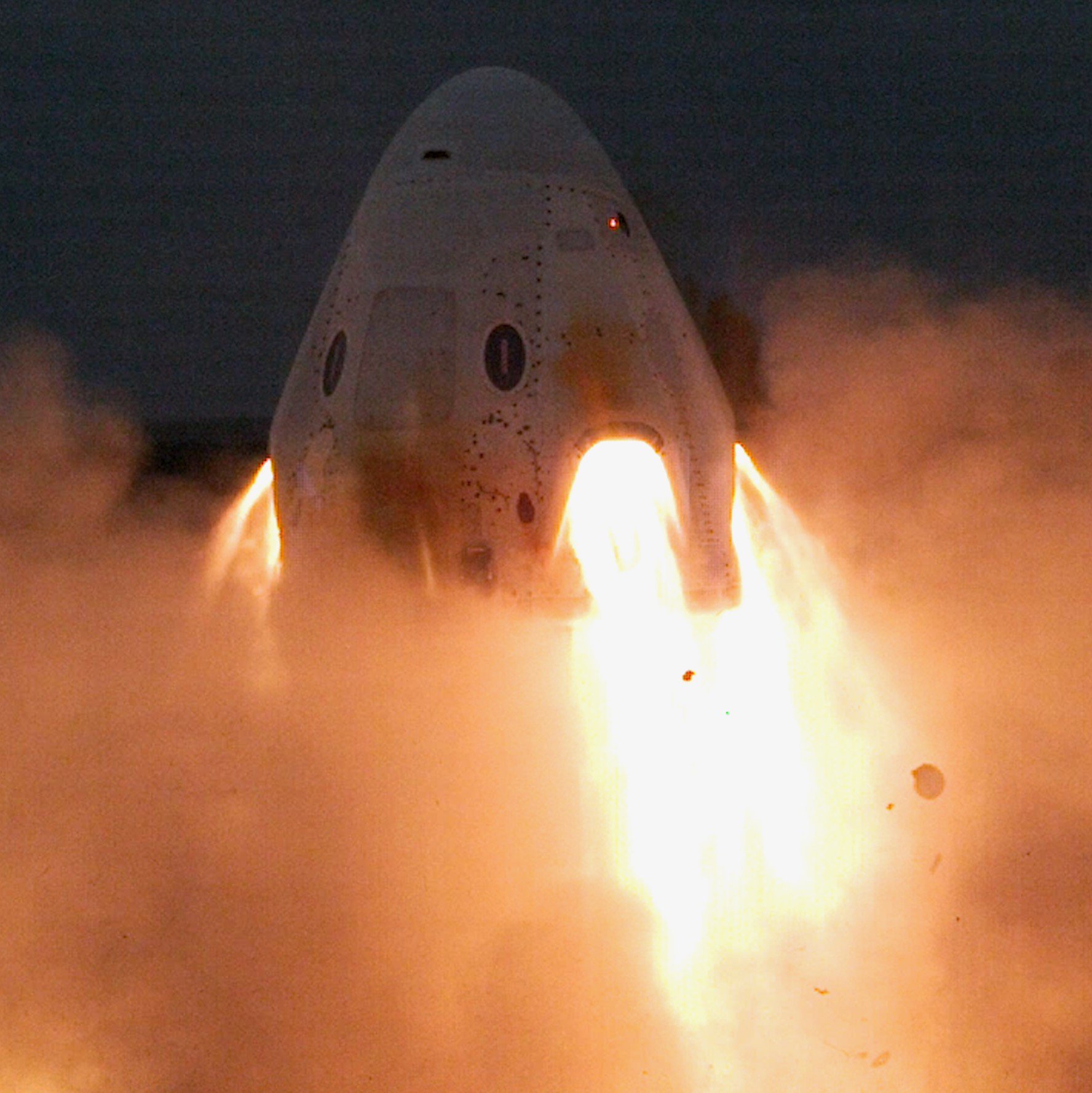SpaceX to Launch Critical Crew Dragon In-Flight Abort Test No Earlier Than Jan. 4
SpaceX and NASA had hoped to launch the flight this month.
The private spaceflight company SpaceX will launch a critical launch escape system test for its Crew Dragon spaceship to no earlier than Jan. 4, NASA announced Friday (Dec. 6).
SpaceX and NASA originally hoped to launch the test flight, called an In-Flight Abort Test, sometime this month, but an exact launch date was never released. In a statement Friday, NASA officials said the mission will now lift off no earlier than Jan. 4 from Pad 39A of NASA's Kennedy Space Center in Cape Canaveral, Florida, pending launch range approval from the U.S. Air Force.
The new launch target will push the SpaceX flight beyond the year-end holidays, as well as a planned Boeing launch of its first uncrewed Starliner astronaut taxi for NASA, which is slated to launch Dec. 20.
During the upcoming test, SpaceX will launch a uncrewed spacecraft on a Falcon 9 rocket and, in mid-flight, activate the capsule's launch abort system to separate the the spacecraft from the rocket. The test will demonstrate Crew Dragon's ability to use its eight SuperDraco abort motors to pull the spacecraft free from its rocket during a launch emergency, a critical safety system needed before NASA astronauts can begin flying on the vehicle in 2020.
Video: Watch SpaceX's Crew Dragon Abort System in Close-Up Action

Once ripped from the Falcon 9, the Crew Dragon capsule will deploy parachutes and splashdown in the Atlantic Ocean.
"As part of the test, SpaceX will configure Crew Dragon to trigger a launch escape shortly after liftoff and demonstrate Crew Dragon's capability to safely separate from the Falcon 9 rocket in the unlikely event of an in-flight emergency," NASA officials said in the statement. "The demonstration also will provide valuable data toward NASA certifying SpaceX's crew transportation system for carrying astronauts to and from the International Space Station."
Get the Space.com Newsletter
Breaking space news, the latest updates on rocket launches, skywatching events and more!
SpaceX is one of two companies with multibillion contracts to fly astronauts to the space station for NASA after the agency retired its space shuttle fleet in 2011. The other company is Boeing, which is developing its own CST-100 Starliner spacecraft for launches on Atlas V rockets.
Related: The Emergency Launch Abort Systems of SpaceX and Boeing Explained
NASA picked the two companies as its commercial crew carriers in 2014, with SpaceX receiving $3.14 billion and Boeing $4.82 billion to date under the deal to develop and fly the new vehicles.
SpaceX launched its first uncrewed Crew Dragon test flight to the International Space Station, called Demo-1, in March of this year. But the capsule used on that flight was destroyed during a ground test failure while testing its SuperDraco abort engines.
SpaceX has since upgraded the engines to prevent a similar failure and performed a series of successful ground tests. The company has also been upgrading and testing its Crew Dragon parachutes to make sure they are ready for crewed flights. On Wednesday (Dec. 4), SpaceX announced it had completed the seventh successful test of its Mark 3 parachute system for Crew Dragon.
Boeing, meanwhile, has been pushing forward with Starliner tests.
Last month, the company successfully tested its launch abort engines in a so-called pad-abort test. Boeing plans to launch its first uncrewed Starliner mission to the International Space Station, called the Orbital Flight Test, no earlier than Dec. 20.
- In Photos: NASA Practices Emergency Astronaut Recovery with SpaceX, Boeing
- SpaceX's Crew Dragon Demo-1 Test Flight in Pictures
- SpaceX Fires Up Rocket in Prep for 1st Astronaut Launch with Crew Dragon (Photo)
Email Tariq Malik at tmalik@space.com or follow him @tariqjmalik. Follow us @Spacedotcom and Facebook.

Join our Space Forums to keep talking space on the latest missions, night sky and more! And if you have a news tip, correction or comment, let us know at: community@space.com.

Tariq is the Editor-in-Chief of Space.com and joined the team in 2001, first as an intern and staff writer, and later as an editor. He covers human spaceflight, exploration and space science, as well as skywatching and entertainment. He became Space.com's Managing Editor in 2009 and Editor-in-Chief in 2019. Before joining Space.com, Tariq was a staff reporter for The Los Angeles Times covering education and city beats in La Habra, Fullerton and Huntington Beach. In October 2022, Tariq received the Harry Kolcum Award for excellence in space reporting from the National Space Club Florida Committee. He is also an Eagle Scout (yes, he has the Space Exploration merit badge) and went to Space Camp four times as a kid and a fifth time as an adult. He has journalism degrees from the University of Southern California and New York University. You can find Tariq at Space.com and as the co-host to the This Week In Space podcast with space historian Rod Pyle on the TWiT network. To see his latest project, you can follow Tariq on Twitter @tariqjmalik.










